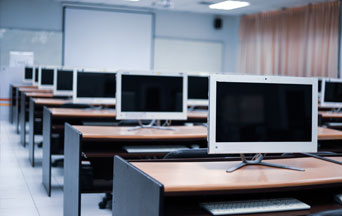
As any honest teacher will tell you, learning is difficult.
However, teachers may only admit this truth when no one else is around. Such disclosures clash with the prevailing educational orthodoxy. In addition, learning difficulties are likely to be blamed on teachers, who thus make themselves targets.
Therefore, making it easy to learn is a goal of both teachers and administrators, who rush to employ “information technologies” in the classroom.
Falling Short
That effort has failed. Students are not learning more in the “technology-rich environments” of the new classrooms.
For example, four faculty members of the “Yale Center for Emotional Intelligence and Yale Child Study Center” published a 2020 study about technology in the classroom. They interviewed 21,678 students nationwide and found that “[S]eventy-five percent of the feelings students reported in their responses to open-ended questions were negative. The three most frequently mentioned feelings were tired, stressed, and bored.”
COVID has made the reliance on technology even more complete. So-called distance learning has been a disaster. Even the reliably liberal Education Week openly admits this in stories with titles like “Learning Loss During COVID Will Fuel Economic Losses, Business Leaders Predict.”
In a recent op-ed, the American Enterprise Institute called this problem “The Multi-Million Dollar Pandemic Mistake Schools Are Reluctant to Fix.”
Eternal and Natural Law: The Foundation of Morals and Law
Inherent Flaws
Yet, the AEI piece says the problem predates COVID. It quotes Larry Cuban of Stanford University, who gives two reasons why technology has not paid off in the classroom.
The first reason is that Dr. Cuban calls the “novelty effect.” The students initially love the new programs but rapidly become bored by them.
Dr. Cuban’s second reason involves the technology purchasing process. Usually, administrators decide to purchase machines and programs without involving teachers. Then, they are dumped upon the teachers with little training. Even the novelty effect is squandered because the teachers try to use and teach something that they do not understand.
Certainly, skillful teachers can use technology to make lessons more appealing. Technology should only enhance the role of the teacher, not replaced it. No machine can make a poor teacher into a good one.
Learning Tool or Distraction?
Another technology problem is that many schools use the students’ smartphones as the tool of choice. Paul Barwell, a teacher at Fern Creek High School in Louisville, Kentucky, discussed this situation in a 2016 essay printed in The Atlantic.
“[S]chool districts across the country are in the midst of trying … to ensure all students have access to an Internet-enabled device. One way to solve the access issue is to allow students to use smartphones in class. At Fern Creek, where I’d estimate that at least 80 percent of students have smartphones, this would seem like a logical choice.”
However, those smartphones have many other uses, which are often more entertaining than lessons. Mr. Barwell quotes clinical psychologist Richard Freed, author of The Wired Child: Reclaiming Childhood in a Digital Age. “High levels of smartphone use by teens often have a detrimental effect on achievement, because teen phone use is dominated by entertainment, not learning, applications.”
No classroom teacher can compete with the entertainment options available through a smartphone.
Learn All About the Prophecies of Our Lady of Good Success About Our Times
Feeding Into Progressive Education’s Errors
Progressive educational doctrines and practices make high-tech teaching worse. The fundamentally flawed premise is that teaching is a science.
Thus, administrators presume that teachers can “install” information and skills into students like machines. If teachers follow a set of “best practices,” their students will learn. The development of educational technology fits into this thought pattern since the computer has become a kind of “teaching machine” that replaces the classroom teacher.
However, students are not machines. They do not yield predictable results given the proper infusion of information and educational technique. They are human beings whose level of learning on any given day varies widely.
The Non-Mechanical Student
First, children have a wide variety of interests, talents and abilities—as God gave them.
Second, they come from widely disparate environments. Some sleep well; others do not. The well-nourished function more successfully than the hungry. Students with chaotic home lives are generally less receptive than those from stable and harmonious families.
Even the school’s schedule produces variations. Fridays are notably less amenable to learning than Tuesdays or Wednesdays. Attention flags as the productive mid-morning gives way to the half-hour before lunch. The day before Christmas or Easter vacations is all but useless.
Science Confirms: Angels Took the House of Our Lady of Nazareth to Loreto
Teaching as an Art
Skillful teachers can take all these factors into account. They notice when attention flags and can introduce new elements to break the monotony. They can adjust facts, ideas and examples to fit the prevailing interests of the moment. Simultaneously, they devise ways to pull in the emotionally isolated child. They know when to press on and when to leave a particular topic for another day. They utilize humor or sternness as the situation demands. Most of all, teachers know their students better than any machine ever will.
Thus, teaching is not a science but an art. Successful teachers use their skills and creative imaginations, as well as those of the students. They acquire their skills gradually by experience, study, and observation—which they constantly update as new situations arise.
The computer is heartless. It proceeds at the same pre-set pace, regardless of the students’ abilities. The computer cannot assess whether the student is paying attention or ignoring it. It learns nothing and forgets nothing. It can inform, it can entertain, but it can never teach.
Photo Credit: © atsarapong – stock.adobe.com

